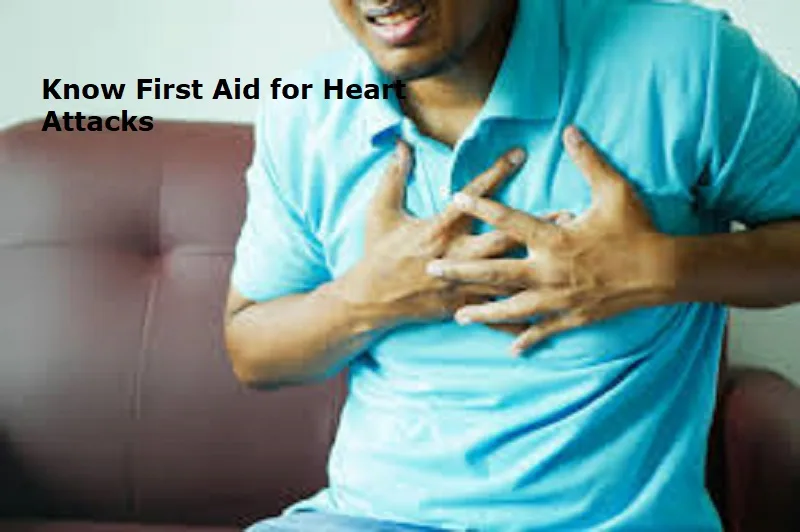
A heart attack occurs when blood flow to a part of the heart is blocked, often by a blood clot, leading to damage or death of heart muscle tissue. According to the World Health Organisation (WHO), cardiovascular diseases, including heart attacks, are the leading cause of death globally. Prompt first aid can save a life during the critical minutes before professional medical help arrives.
The first few minutes of a heart attack can determine survival and long-term outcomes. Symptoms like chest pain, shortness of breath, and sweating are warning signs. Responding quickly with the correct first aid techniques can help maintain blood flow, support breathing, and reduce damage to the heart.
1. Recognise the warning signs
The first step is identifying a heart attack. Key symptoms include the following, if someone exhibits these signs of heart attack, act quickly and do not ignore them.
a. Chest discomfort or pain (may feel like pressure or squeezing)
b. Pain radiating to the arms, neck, jaw, or back
c. Nausea, shortness of breath, dizziness, or cold sweat
2. Call emergency medical services immediately
Dial your local emergency number (such as 112 or 108 in India) without delay. Do not attempt to drive the person to the hospital unless emergency services are unavailable. Inform the operator clearly that you suspect a heart attack; time is critical.
3. Help the person sit down and stay calm
Have the person sit in a comfortable position, preferably on the floor with knees bent, supported by a cushion or wall. This reduces strain on the heart. Encourage them to stay calm, as panic can worsen symptoms. Reassure them that help is on the way.
Also Read: Benefits of strength training for women
4. Loosen tight clothing
Loosen belts, collars, or tight garments to help the person breathe easier. This also reduces discomfort and may make it easier for responders to examine and treat the individual when they arrive.
5. Administer aspirin, if advised
If the person is conscious, not allergic, and has no history of stomach ulcers or bleeding issues, a standard 300mg aspirin tablet (chewed or swallowed) may help prevent further clotting. The American Heart Association recommends aspirin in suspected heart attacks only after checking with emergency responders or a healthcare provider.
6. Monitor pulse and breathing
Stay with the person and keep monitoring their responsiveness, pulse, and breathing. If they become unconscious or stop breathing, be prepared to begin CPR (cardiopulmonary resuscitation) immediately. You can ask the emergency dispatcher to guide you through the process.
7. Perform CPR if necessary
If the person becomes unresponsive, knowing basic CPR can dramatically increase survival rates in such situations.
a. Place them on their back on a firm surface
b. Start chest compressions; push hard and fast in the centre of the chest (100–120 compressions per minute)
c. Continue until help arrives or the person regains consciousness
8. Avoid giving food or water
Do not give the person anything to eat or drink, as this may complicate medical procedures or trigger choking if they become unconscious. Keep the focus on comfort, monitoring, and timely professional care.

Post Your Comments